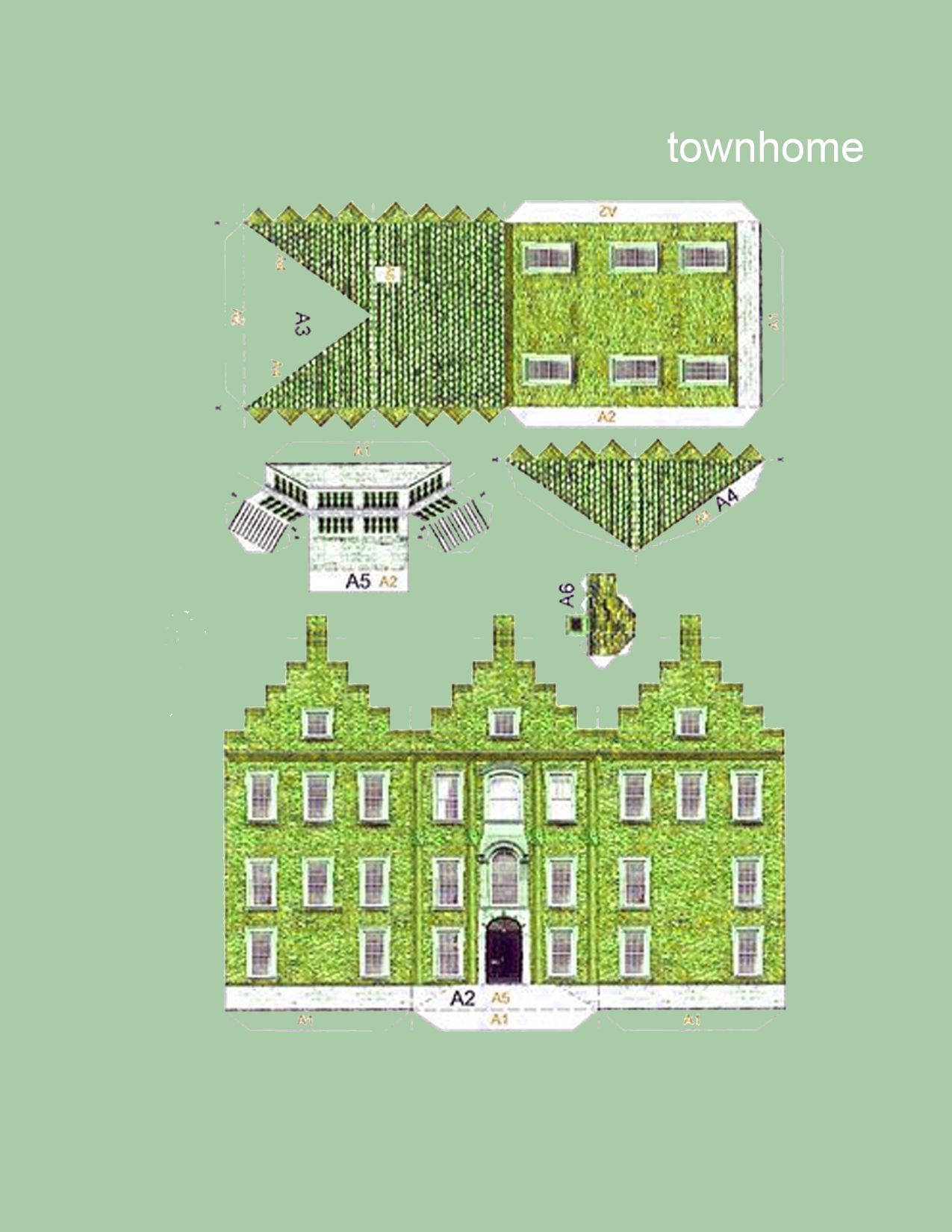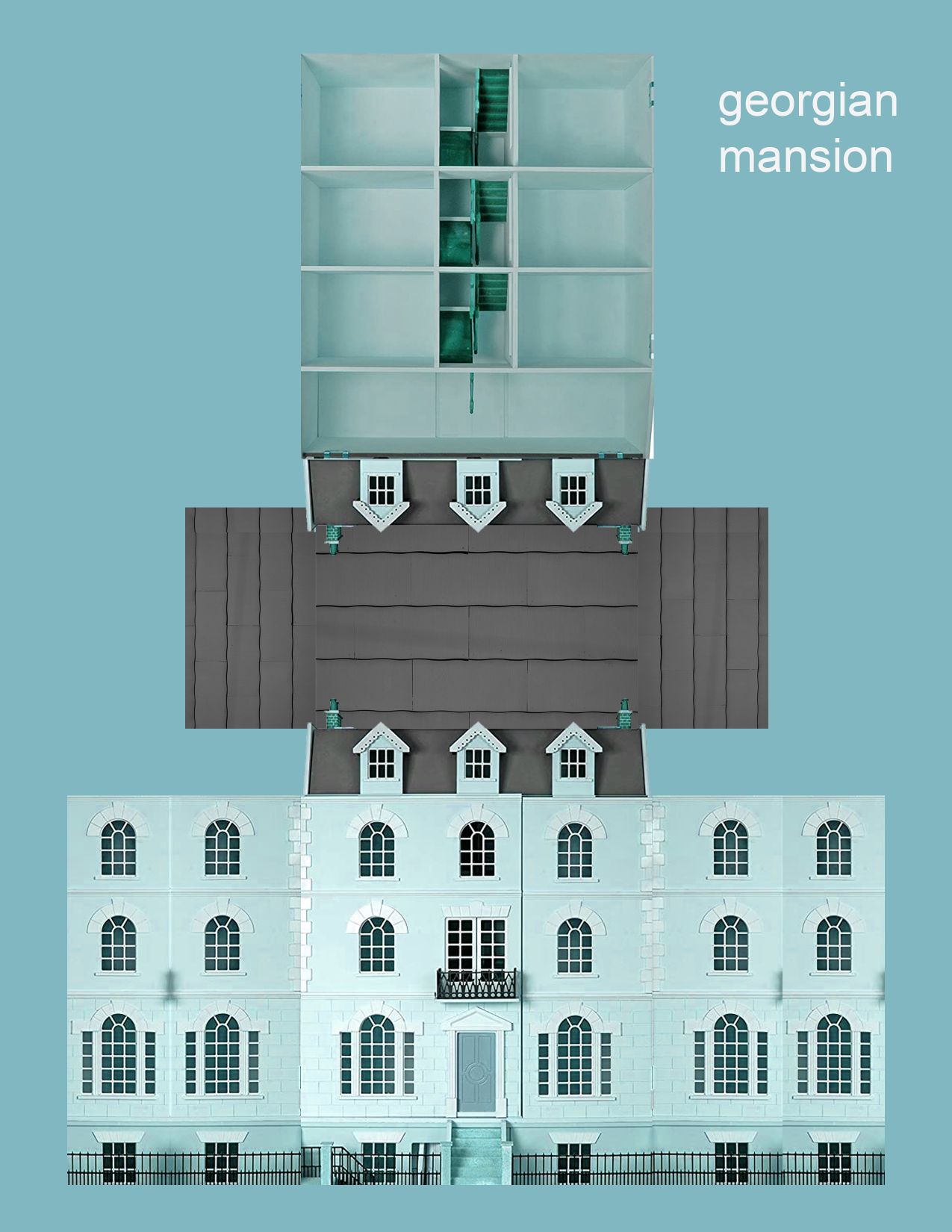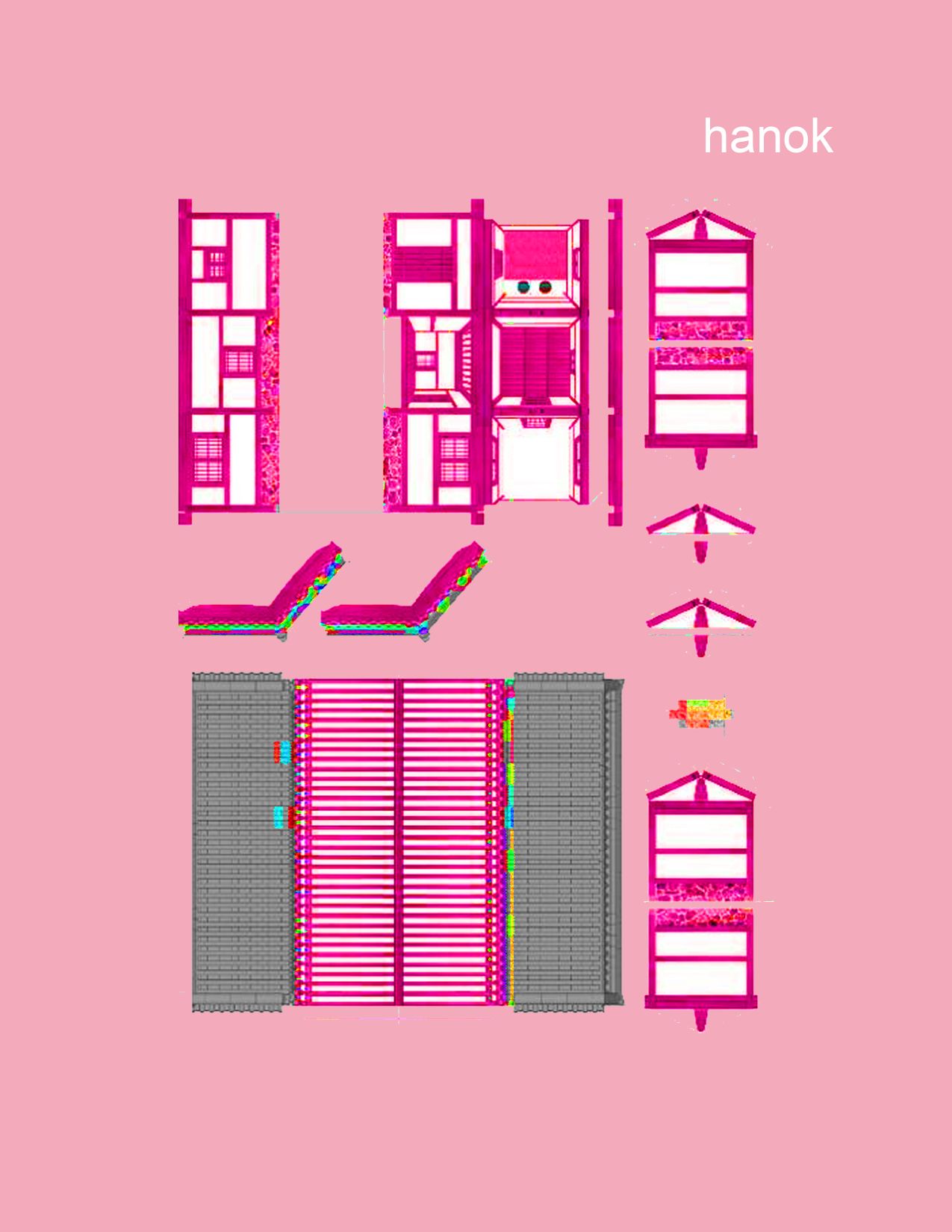How to Construct a Home
Yeeseon Chae
DESCRIPTION:
This report contains subjective instructions and patterns for preparing a set of 4 homes: a pillow fort, contemporary townhome, Georgian mansion, and hanok. These homes are 3-D models of images and, as ideas of homes, are not meant to be physically occupied. While constructing these homes, recall points of comfort and contention in regards to place and especially in those called home.
MATERIALS:
- Scissors (or X-Acto knife)
- Cardstock paper
- Glue
- Tape

The first model is based on an early childhood memory. Though the various styles of pillow forts have expanded due to an increase in popularity, the basis of a pillow fort remains the same. Blankets hang over the chairs to hold up the structure and provide a degree of separation between its occupants and the rest of the world. More blankets will fit the interior “carpeting” and old pillows along with any mish mash of trashy magazines, mystery novels, and small snacks will be scattered inside. In the 3-D model, additional paper pillows are provided to be stacked onto the given structure in any way with glue or tape.
Pillow fort: Cut out all of the shape. You should have a triangle on the right, a long rectangle with folds, and a triangle on the left with tabs and a tail. Fold all of the edges that are faintly outlined on top of the blanket pattern. Cut out the left, complex triangle, and then fold the remaining sides twice more to construct a sort of window into the tent. Glue the remaining tail into the connecting triangle and attach the two side folds together to create the final triangular tent shape.
Pillows: Press gently in half and tape the ends together.
Chair: Cut out the outline of the chair carefully and fold along the dotted line. Attach the top folds to the interior base of the chair and the bottom folds to the front legs of the chair.
Books and magazines: Cut out and fold carefully down the spine.
Snacks: Cut carefully and attach to create a box shape for each.

The second model is meant to reveal only a small amount of information. These townhomes are usually made of brick or vinyl siding and wood and exist in a larger ecosystem of other townhomes. Named after the city homes for the wealthy, the name townhouse or townhome was later used to describe non-uniform units in suburban areas designed to mimic detached or semi-detached homes. Townhomes are everywhere and nowhere and are almost like a transplant into a suburbia you do not actually know but are familiar with. Did you grow up in a townhome? Me too. A townhome is dry and detached so if you are handling with moisturized hands, return with dry, almost cracked hands that may be easily cut by the paper.

The third model is what all mass-produced dollhouses look like. Named after the period of English architecture from the 18th century, these houses are square, symmetrical, and a bit odd in their specific measurements. Georgian mansions belong to Jane Austen movie adaptations and middle school parties on the other side of town where you have to bring a small gift so you do not look like an ungrateful guest. There are so many windows, through which one can sometimes see a little curtain pulled back to reveal a home inside.

First designed in the Joseon dynasty, these are traditional Korean homes that have existed since the 14th century. A hanok is made up of soil, timber, rock, hanji, and bean oil. Most materials for structures were typically sourced from the surrounding areas. The physical homes that I have encountered, both ones that I have called home and ones that I call the homes of others, have never been built by the hands of its present occupants. Do you define home ownership by the mark of your hand? Or is it the wrinkling of your nose at the slight musty smell that only you can smell when it rains? The position of the hanok to its surroundings is most important, so position your model in your room accordingly so that the closest mountain is to its back and the closest body of water is to the front.
[1] Please define “home.”
[2] Please define “habitat.”
[3] What are the differences in Answers 1 and 2?
[4] Were you active in childhood?
- Yes, active.
- No, inactive.
[5] Are you active now?
- Yes.
- No.
- I’d like to be.
[6] Did you move around a lot? A lot may be defined in this case as an overwhelming amount.
- It was a lot.
- It was not a lot.
[7] Remember your first home. This may be your current home, this may be many, many homes ago. Is it a pleasant memory?
- Pleasant
- Unpleasant
[8] Did you have to shuffle through to find that memory or did it come rather easily?
- Easy
- Uneasy
[9] Have you recently (in the past 1-3 years) gone back to your first home?
- Yes
- No
[10] Where are you most comfortable? Is it an actual physical place?